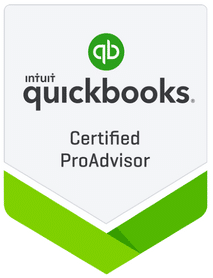- Patrick Roney
- (877) 503-8607
Follow Us :
Follow Us :
Proledge
January 14, 2011

A few years ago, the QuickBooks Audit Trail feature could be turned on and off. However, in the most recent versions of QuickBooks, the feature is always on. Even the administrator can’t turn it off. It has its drawbacks, but for the most part, it is a very useful feature, albeit under-utilized.
Quick primer on the Audit Trail. This feature automatically tracks all the additions, deletions, and modifications made to transactions in your data file. A report allows to list all these changes going as far back as the audit trail feature existed. These reports are of course humongous, but tools allow you to filter the report to zoom in on the transactions of interest to you.
The implication is that ANYTHING you do in QuickBooks leaves a trail and can be identified.
There is nowhere to hide: if you made a mistake, you can undo it, but you can’t cover your trail. Auditors love seeing these meanderings because it might be a sign of data manipulation. However, if your intentions are all good, there is nothing to worry about.
If there are multiple people using QuickBooks, the Audit Trail feature is a god send. The more cooks in the kitchen, the more likely someone will break something that was done correctly in the first place. The most common example is when User A modifies or deletes a transaction that had already been reconciled by User B. This breaks the reconciliation, but nobody will notice until the following month when someone tries to reconcile the previous month and the opening balance is off. A discrepancy report will immediately show which transaction was modified or deleted and the audit trail will show that it was User A who did it. This will allow to fix the issue and train User A to not repeat the mistake.
Needless to say that the audit trail is instrumental in preventing and identifying fraud. The mere fact of making your employees and bookkeepers aware of the existence of the audit trail will already discourage fraud, but if fraud happens, you now have your forensic tool.
HOWEVER, for the training and fraud control objectives to be met, each user needs to log into QuickBooks using his/her own user name. If everybody logs in using the admin user name, the audit trail will tell you how the inappropriate transaction was made, but it won’t tell you who did it. Make sure to create distinct user names for each user and to keep the passwords confidential.


Fill out the form below to sign up to our Blog Newsletter and we’ll drop you a line when new articles come up.
Bookkeepers.
Professional. Affordable.
ProLedge is a bookkeeping services firm.
Copyright © 2024 All rights reserved.